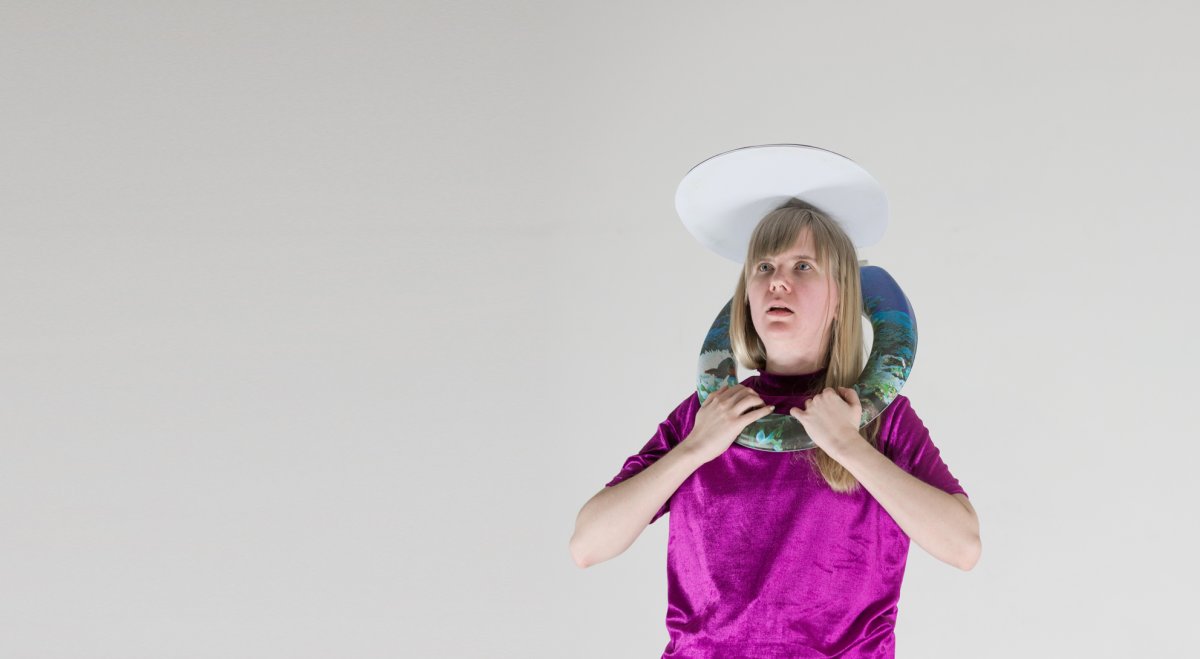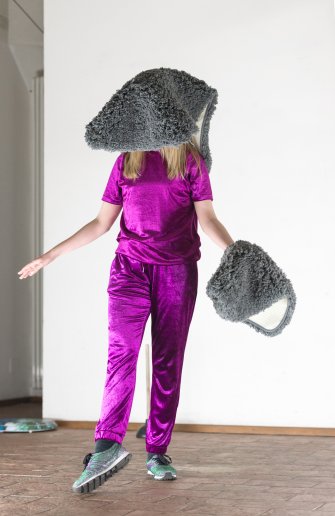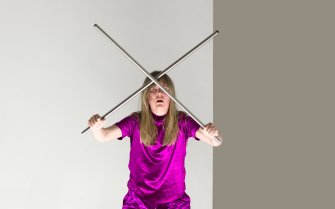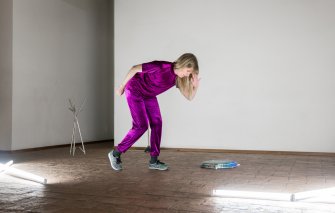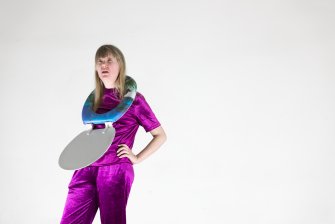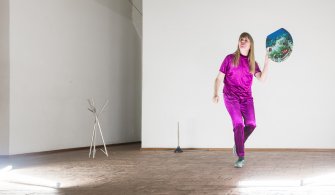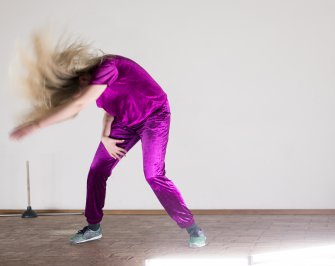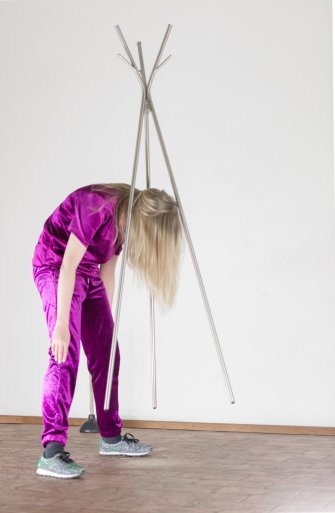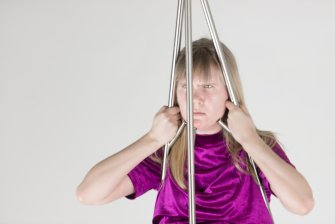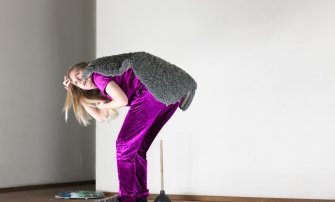Things a Person is Supposed to Wonder
Bridget Moser
Things a Person is Supposed to Wonder è una collezione di brevi performance che prende molteplici forme spostandosi in modo imprevedibile tra gesti, suoni e discorsi. Apparentemente frutto di improvvisazione, queste opere sono in realtà accuratamente scritte, degli ibridi che fanno uso di bizzarre interazioni con oggetti inanimati sottratti alla quotidianità (la ciambella di un water, un appendiabiti, un tappetino, uno stura-lavandini) per articolare momenti di ansia, impazienza, ira, furia, cambiamento, perdita, cattiveria e altro ancora. Muovendosi tra critica, humour e emozione, le opere di Bridget Moser divertono sconcertando.
Nelle performance di Bridget Moser - che sono in un modo o nell'altro dei display per l'ansia sociale e il sovrappeso consumistico della società nordamericana - il pathos e l'umorismo humour nascono dalla frizione tra virtuosismo e inettitudine. Moser sta in equilibrio sul filo tra sublime e ridicolo, grazie a una potente immaginazione che riconfigura continuamente le cose e che trascina lo spettatore nel morphing incessante della performer. "Moser vede gli oggetti come un bambino riesce a vedere un fiume in un tappetino azzurro da yoga che si srotola." Nella serie di danni, scarti, temporanee vittorie e piccoli inganni ordinari, Moser inietta dosi segrete di auto-riflessione e forse auto-accettazione.
Things a Person is Supposed to Wonder is a collection of short works that take on multiple forms and shift unpredictably between performative modes, texts, and sound. Seemingly improvised, but in fact carefully scripted, these hybrid works make use of bizarre interactions with everyday inanimate objects (a toilet seat, a coat rack, bath mats, a plunger) to articulate moments of anxiety, impatience, wrath, fury, change, loss, wickedness, and more. Moving between states of criticality, humour, and emotion, the resulting performance is at times entertaining, affective, and bewildering.
Moments of pathos and humour in Moser’s work arise from the friction between her virtuosity and ineptitude. Moser’s writing is full of disarming turns of phrase and poetic insight (“I’m drowning in a sea of Hamlets! All indecisive and infested with ghosts. And me worst of all”), and her imaginative reconfiguration of simple props is nothing short of thrilling. Moser sees objects like the child who can see a river, say, in an unfurled blue yoga mat. (Jordan Tannahill)
Moser remains comfortable with the articulation of meaninglessness, resisting the urge to repeat formulaic narrative arcs. She is meanwhile able to keep us morphing along with her as she shifts between guilty pleasures and sincere research. Her balancing act is maintained through careful choreography (soundtrack, props and actions) and her ability to act as a conduit for all manner of accumulated thoughts and feelings. (Allison Collins)

